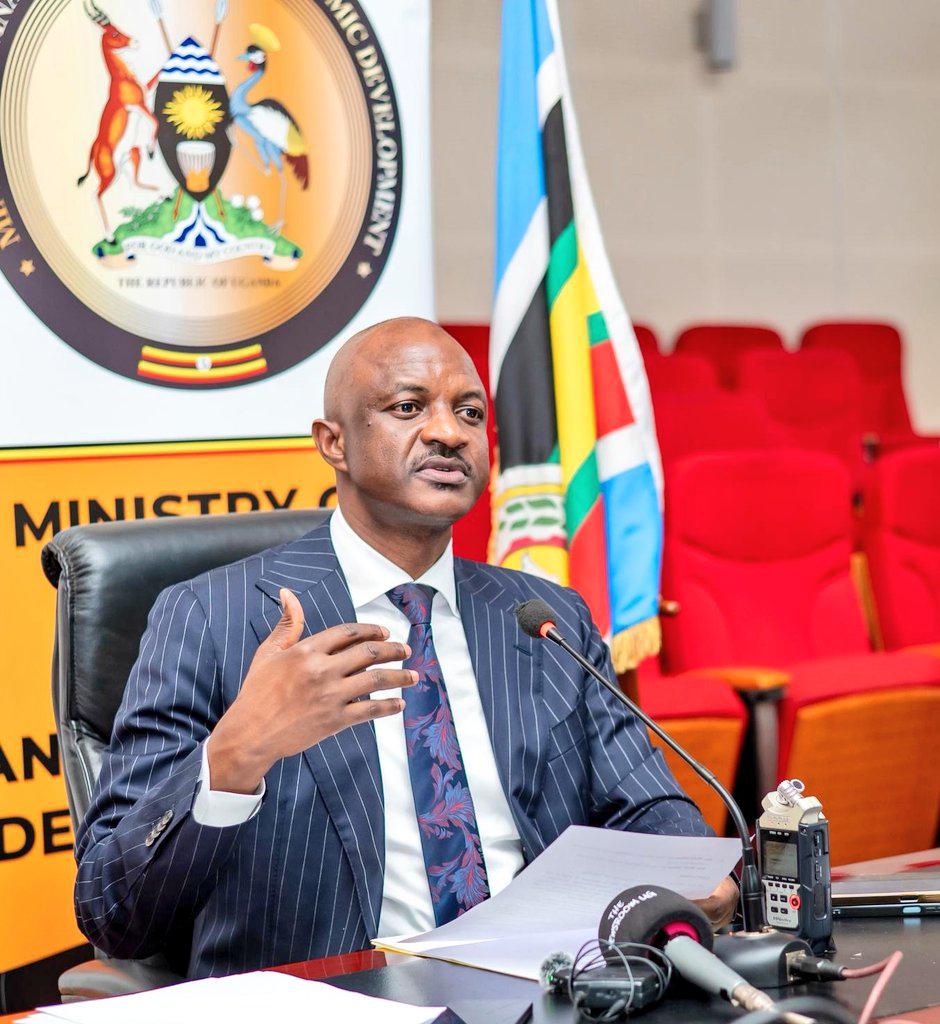By David Mwanje
Uganda’s economy is charging forward, achieving 6.9% growth in the first three quarters of FY 2024/25, as announced by Ramathan Ggoobi, Permanent Secretary and Secretary to the Treasury, during the First Quarter (Q1) expenditure release for FY 2025/26. With Shs 17.18 trillion allocated—23.7% of the Shs 72.38 trillion budget—Uganda is advancing its Ten-Fold Growth Strategy to reach a USD 500 billion economy by 2040. Bank of Uganda Governor Michael Atingi-Ego bolsters this progress with stabilizing policies.
The Q1 budget powers the ATMS framework: Agro-industrialization (Shs 215.28 billion), Tourism (Shs 20.5 billion), Mineral Development (Shs 26 billion), and Science, Technology, and Innovation (Shs 139.13 billion), alongside infrastructure (Shs 1.076 trillion for transport) and health (Shs 262.88 billion). “The budget for this financial year is designed to support the implementation of the Ten-Fold Growth Strategy,” Ggoobi said, emphasizing efficient service delivery.
Economic indicators are robust: the Purchasing Managers’ Index hit 55.6, the Composite Index of Economic Activity reached 178.58, and the Business Tendency Index recorded 59.17 in June 2025. “The economy is continuing to exhibit resilience and sustained growth in spite of global uncertainties,” Ggoobi noted. Real GDP growth is projected at 7% for FY 2025/26, with double-digit growth expected medium-term as oil production starts in 2026. The World Bank forecasts 6.2% growth in FY 2024/25, rising to 10.4% by FY 2027 with oil revenues.
Exports surged 39.1% to USD 2.6 billion in Q3 FY 2024/25, driven by coffee and cocoa, narrowing the trade deficit by 39.1% to USD 461.15 million. Foreign Direct Investment rose 26.3% to USD 785.79 million, totaling USD 3.48 billion. “Uganda also continues to be a favourable destination for Foreign Direct Investment,” Ggoobi stated. Inflation held at 3.9% in June 2025, and the Ugandan Shilling appreciated 1.3% against the US Dollar. “The Uganda Shilling has remained one of the best performing currencies in Africa,” Ggoobi declared.
Governor Atingi-Ego, appointed in February 2025, emphasized stability. “Our mission is to ensure price stability and a healthy financial system supporting Uganda’s socio-economic transformation,” he said in Mbarara, March 2024. On inflation, he noted in August 2024, “We expect inflation to continue rising moderately in the next four months before stabilising at around the target of 5 per cent by the first quarter of 2025.” He added, “GDP growth picked up in the last two quarters of FY 2023/24, with an average year-on-year growth of 6.7 per cent,” projecting 6–6.5% for FY 2024/25 and over 7% medium-term.
Risks include commodity price spikes and trade disruptions, as Atingi-Ego warned, “The risk of higher commodity price and disruption to trade flows remains, linked to developments in the Middle East.” Analysts note a 7.9% current account deficit and foreign reserves at USD 3.4 billion, covering three months of imports. Delays in oil projects could challenge projections. Ggoobi stressed fiscal discipline: “Accounting Officers must ensure that all contracts and payments are executed in Uganda Shillings.”
Uganda’s outlook remains strong, with President Museveni affirming, “The new leadership at the Bank of Uganda must ensure financial stability, strengthen monetary policy implementation, and support Uganda’s broader economic agenda.” With strategic investments and sound policies, Uganda is on track to sustain its economic surge toward middle-income status.






















